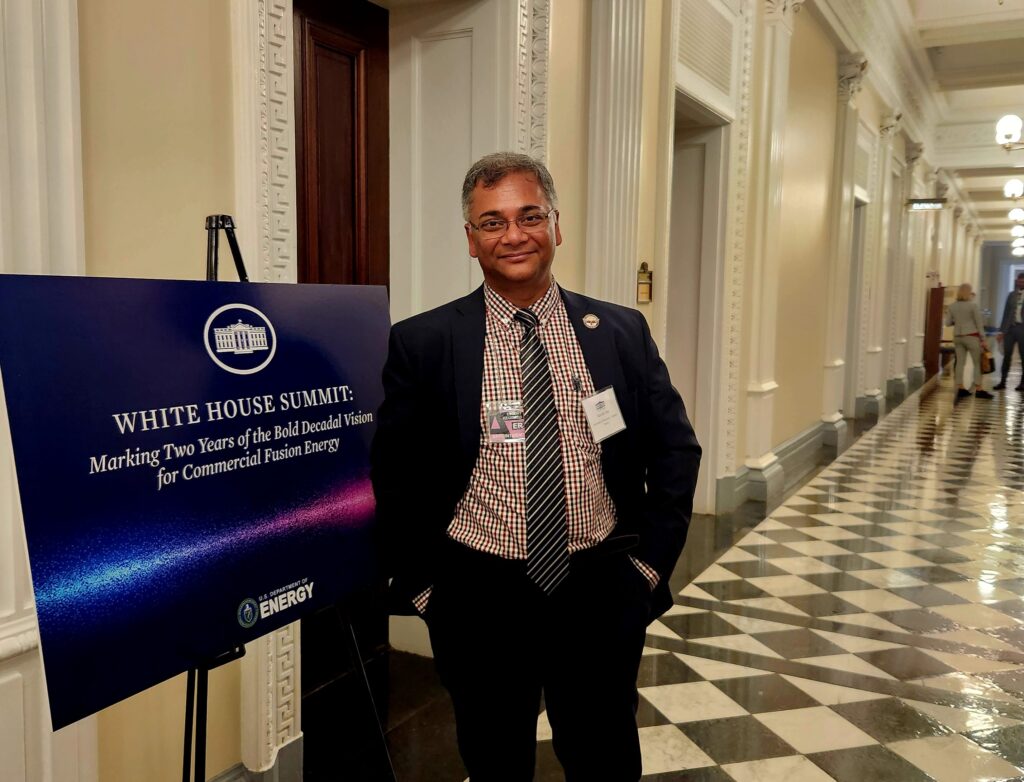
When the nation achieves pilot-ready fusion technology anticipated within the next decade, it will be with the input of the University of Maryland Eastern Shore. Physics professor Kausik Das was invited by the White House for a meeting June 6 among the nation’s leaders in fusion energy from government, industry and academia.
The event, hosted by the Office of Science and Technology and the U.S. Department of Energy, marked two years of the Bold Decadal Vision for Commercial Fusion Energy.
“It was an honor to attend the White House summit alongside esteemed individuals such as Congressman Don Beyer, a member of the Fusion Energy Caucus; Department of Energy Deputy Secretary David Turk; and John Podesta, senior adviser to the president for Clean Energy Innovation and Implementation,” Das said. “The meeting established a definitive road map for integrating fusion energy as a viable low-cost commercial energy source by bringing together researchers for sustained innovation, educators for skilled workforce development, regulators to ensure public health and safety, and industry to incorporate this new technology into the economy.”
He described the summit as “a crucial step toward achieving carbon-neutral green energy goals,” addressing the urgent and significant challenge of climate change faced by today’s generations and those of the future.
Das’ research lab at UMES is contributing to the field of low temperature plasma generation. He also collaborates with the Princeton Plasma Physics Laboratory as part of an alliance to increase diversity to plasma science and the fusion energy field. The University of Maryland Eastern Shore along with Howard University and the U.S. Coast Guard Academy are partners in the Pathways to Fusion Collaborative Center led by Princeton and funded through the Department of Energy.
Das’ UMES lab discovered a novel technique on plasma generation by household microwave ovens and published a paper with PPPL head of science education and program lead Arturo Dominguez as a co-author. The paper was featured by MIT Technology Review as a game-changer and became the “Editor’s Choice.” It was also the most downloaded paper in the American Journal of Physics in 2021.
A decadelong faculty member at UMES, Das is distinguished as a fellow of the American Physical Society and the Kavli Institute of Theoretical Physics at the University of California, Santa Barbara.
His research, which involves mostly undergraduates, also includes micro/nano fluidic mixing, creating on-chip graphene-based nano-inductors, bio-energy generators, space physics, sustainable solutions and work on light-activated resistive switches.
Gail Stephens, agricultural communications, University of Maryland Eastern Shore, School of Agricultural and Natural Sciences, UMES Extension, gcstephens@umes.edu, 410-621-3850.

